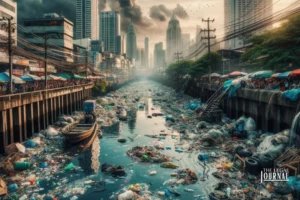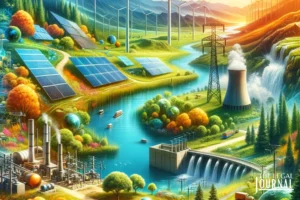The 2023-2026 Amazon Drought: An Environmental and Social Catastrophe
The severe drought impacting Brazil’s Amazon rainforest, an event that experts predict may last until 2026, has emerged as an environmental crisis with profound legal and social implications. The Amazon, often referred to as the Earth’s lungs due to its vast capacity to absorb carbon dioxide and produce oxygen, is experiencing one of the worst droughts in recent history. This crisis has highlighted the legal challenges and responsibilities of governments and international bodies in addressing climate change and protecting vulnerable ecosystems.
Key Points:
- Extended Drought Duration: The drought impacting Brazil’s Amazon rainforest is one of the most severe in recent history and is predicted to last until at least 2026, signaling a significant environmental crisis.
- Impact on Local Communities and Wildlife: The drought has severely affected local communities dependent on the Amazon for resources such as food, transportation, and commerce. Wildlife, including fish and dolphins, has also been significantly impacted, with worrying signs for the region’s biodiversity.
- Government Response and Relief Efforts: In response to the crisis, the Brazilian government has declared a public emergency in the hardest-hit areas and established a task force. This includes delivering essential supplies, medical assistance, and educational support, as well as committing resources for dredging operations to maintain river navigability.
- Environmental and Legal Challenges: The situation in the Amazon raises important legal and policy questions regarding the responsibility of governments and the international community in addressing climate change and ecosystem protection. It highlights the need for effective environmental policies and international collaboration to combat the underlying causes of such environmental disasters.
- Global Environmental Implications: Scientists are concerned about the long-term health of the Amazon and its global environmental implications. The loss of large trees and the potential die-off of significant portions of the rainforest could lead to massive releases of carbon dioxide and the loss of unique biodiversity, underscoring the interconnectedness of local and global environmental issues.
Communities dependent on the Amazon’s rivers for food, transportation, and commerce have been severely affected. Amazonas, the hardest-hit state, declared a public emergency in September, leading to the distribution of essential supplies like drinking water and food via aircraft and smaller boats. The state has also deployed helicopters for medical emergencies and set up remote learning for students who cannot travel to school.
In addition to human populations, the drought has taken a toll on wildlife. Reports of large numbers of dead fish and dolphins have raised concerns about the long-term impact on aquatic life in the region. The reduced fish populations could have lasting effects on the ecosystem and the livelihoods of local fishermen.
The Brazilian federal government has established a task force, committing significant resources for relief efforts, including medical supplies, forest fire fighting reinforcements, and dredging operations to maintain navigability in the rivers. This initiative reflects an acknowledgment of the government’s role in mitigating the effects of such environmental disasters.
The crisis in the Amazon raises broader legal questions about the responsibility of governments and international communities in combatting climate change and protecting ecosystems. The situation in the Amazon exemplifies the need for comprehensive environmental policies and international cooperation to address the root causes of climate change.
Scientists have expressed grave concerns about the long-term health of the Amazon. Repeated severe droughts affect the moisture levels in the soil and threaten the survival of the forest’s largest trees. The potential loss of these trees could accelerate the forest’s transition to a point of no return, leading to significant parts of the Amazon dying off. This scenario would have catastrophic global implications, including massive releases of carbon dioxide and the loss of unique plant and animal species.
The Amazon drought represents a crucial moment for environmental policy and law. It challenges governments, international bodies, and legal frameworks to respond effectively to the immediate crisis and to address the underlying issues of climate change and environmental protection. The situation in the Amazon is a stark reminder of the interconnectedness of local environmental issues and global climate change, underscoring the need for comprehensive and collaborative legal and policy solutions.
Citations:
- Reuters. (2023). “Impact of Amazon’s climate-driven drought may last until 2026.” Retrieved from Reuters.
- Mongabay News. (2023). “Prolonged drought brings unprecedented changes to Amazonian communities in Pará.” Retrieved from Mongabay.
- Reuters. (2023). “Brazil sets up task force for unprecedented drought in Amazon, minister says.” Retrieved from Reuters.








